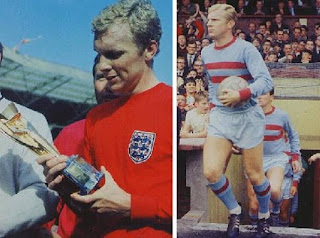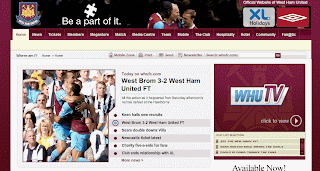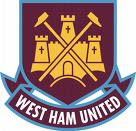
West Ham's romantic tradition and famous brand is second to none in the footballing world. The club is known as the "Academy of Football" and is renowned as the first English club to have imported "Hungarian-style" attractive football.
At the same time, the Hammers remain one of England's true working class teams. Which other club's manager would take the FA Cup home on the tube! (Ron Greenwood, right, after the 1964 FA Cup final).
The club has unique brand differentiation:
1895: Arnold Hills, President of the London Vegetarian Society, takes advice from his fellow executive board member Mohandas Mahatma Gandhi, to consider the holistic needs of workers at his Thames Ironworks Shipbuilding Company. Thames Ironworks FC is born, and five years later is renamed West Ham United.
1900: Upton Park FC, a now-defunct, West Ham based forerunner of football in the east end, whose fans and players migrate in due course to West Ham United, wins the Olympic Football Gold Medal representing Great Britain at the 1900 Paris Olympics.
1904: West Ham United move to the Boleyn Stadium in Upton Park, where they have played the last 104 seasons. The stadium is named after Queen Anne Boleyn, King Henry VIII's unfortunate second wife, who lived in the vicinity during the 16th century.
1923: West Ham United contest the first ever FA Cup Final at Wembley. Legendary as the White Horse Final, more than 250,000 Eastenders march arm-in-arm from East London to Wembley, singing the veterans' hymn from the First World War, "Abide With Me". The song is now officially sung at each FA Cup final.
1920s: Football's oldest club song is born. "I'm Forever Blowing Bubbles", an American music hall song, is adopted by West Ham fans to serenade a player who resembles the baby from a Pears Soap radio advertisement. The song speaks to idealism, hope, dreams and mortality. It becomes the romantic anthem of the East End of London. It is sung to this day, at every match West Ham play. You can listen to it here, as sung by the 1975 FA Cup final squad:
http://www.youtube.com/watch?v=yvuOtlpSAeY&NR=1
1938: A Jewish footballer from West Ham, Len Goulden, scores what Stanley Matthews described as "the greatest goal I ever saw in football" for the England national team against Nazi Germany, in front of 110,000 German fans including Hermann Goering and Josef Goebbels. It has been described as English football's "Jesse Owens" moment.
http://www.spartacus.schoolnet.co.uk/WHgouldenL.htm
1939-45: West Ham win the War Cup. The club's stadium is badly damaged by the German Blitz, which ravages the East End of London.
1960s: Ted Fenton and Ron Greenwood create "The Academy", a youth and team development programme that seeks to instill Hungarian footballing values in the footballers of the East End. West Ham's reputation for attractive football is born.
1964: Bobby Moore, captain of West Ham, lifts the FA Cup at Wembley.
1965: Bobby Moore, captain of West Ham, lifts the European Cup Winners Cup at Wembley.
1966: Bobby Moore, captain of West Ham & England, lifts the World Cup at Wembley.
Of England's 4 goals in the World Cup Final, 3 are scored by Geoff Hurst (West Ham) and the other goal is scored by Martin Peters (West Ham).
1975 & 1980: West Ham win the FA Cup again.
1986: A unique feat: West Ham's captain and centre back, England international Alvin Martin, scores a hat-trick - against three different goalkeepers! during the course of a season in which West Ham finish just 4 points away from winning the national championship. The second most famous hat-trick in Hammers history - after Geoff Hurst's hat-trick in the 1966 World Cup final.
1980s & 1990s: West Ham produce a stream of England's elite footballers, including Trevor Brooking, Tony Cottee, Paul Ince, Rio Ferdinand, Frank Lampard, Joe Cole, Michael Carrick, Jermain Defoe and Glen Johnson.
2006: Having participated in the 1923 White Horse Final (see above), described as "the
most famous domestic final of all time", West Ham now participate in what is described as "arguably the greatest FA Cup final" - an exhilarating 3-3 draw with Liverpool.










